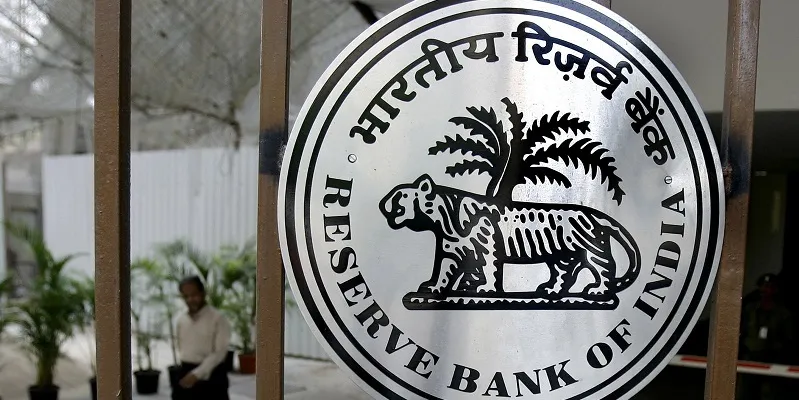Banks flush with funds post demonetisation, but NPAs keep them away from lending
Analysts say gross bad loan ratio has been building up over the last three years and demonetisation has nothing to do with banks not lending.
In a surgical strike just after Diwali last year, Prime Minister Narendra Modi rendered 86 percent of currency in circulation worthless and ensured that cash dominated every conversation in the country.
A year after demonetisation, banks are flush with funds worth Rs 15.28 lakh crore. So why didn’t the money come back into the system? Not because of demonetisation, but because NPAs are very high in India.
According to data available with Reserve Bank of India, the gross bad loan ratio (GBLR) will go up to 10.2 percent in 2018 as compared to 9.6 percent in March 2017. Analysts say this has been building up over the last three years and demonetisation has nothing to do with banks not lending.
Ranen Banerjee, Executive Director-Partner at PWC, says: “Banks have not been lending because NPAs are very high.”
He says the economy will slow down temporarily and going forward, when the informal economy’s data gets included in the growth numbers, the economy will grow around 5.5 percent.
“The private sector borrowed to add capacity and has not been able to repay debts because of lack of global demand,” Ranen says.
Most of this slow growth was because of fall in commodity prices and political headwinds in the US, North Korea and Europe.

CM Grover, Co-founder of IBS Fintech, says: “The only good thing is that demonetisation and GST are bringing a large portion of the economy into the digital economy. Next year, investment in infrastructure will boost the economy.”
The total NEFT/RTGS/ECS transfers in the country increased from $14 trillion in September 2016 to $21 trillion in September 2017. This certainly means that digital transactions will leave a trail for tax authorities and that more money has come into the formal economy.
Lalit Bhise, co-founder of Mobisy Technologies, a company that works with retailers and wholesalers, says: “One can expect growth to increase from next quarter.”
However, we must expect a flat growth this quarter.
Analysts say things can change in the fourth quarter of the financial year because there will be an uptick in global demand and corporate spending can go up. Banks can free up their cash resources as agri-lending will go up because of good monsoons. The budget too is expected to be a populist one because it will be running up to the national elections in 2019.
Nonetheless, the economy will continue to grow slowly because banks are not lending.
Here is what RBI says in its 2017 financial stability report about Indian banks:
- After years of sluggish growth, the global economy seems poised for a turnaround. Even though there are uncertainties, the underlying feeling of a stable transition from a global accommodative monetary policy regime to a normal rate cycle is evident in equity and fixed income markets.
- Unlike past business cycles wherein credit growth acceleration preceded an uptick in GDP growth, growth in private credit to non-financial corporations is muted.
- The divergence in “interest rate outlook” between the US Federal Reserve (FED) and other advanced economies (AEs), coupled with prospect of soft commodity prices may have implications for some of the commodity-centric currencies.
- Domestically, macroeconomic conditions remained stable and expectations of accelerated reforms and political stability further reinforced the overall positive business sentiment. While retail inflation witnessed significant decline during recent quarters, the real gross value-added (GVA) growth declined to 6.6 percent in 2016-17 as compared with 7.9 percent in 2015-16.
- Going forward, reforms in foreign direct investment, implementation of goods and services tax (GST), and revival in external demand are likely to contribute to a better growth outlook. The capital market indices moved to a higher territory reflecting these positive sentiments.
- Under asset quality pressures, credit intermediation by banks has retrenched and that by NBFCs and mutual funds has increased significantly.
- The half-yearly positions of select non-government non-financial (NGNF) listed companies indicated improvement in the performance of the corporate sector, especially growth in sales.
- During 2016-17, while deposit growth of scheduled commercial banks (SCBs) picked up, credit growth remained sluggish, putting pressure on net interest income (NII), particularly of the public sector banks (PSBs).
- While profitability ratios of SCBs showed a marginal increase, PSBs continue to show a negative return on assets (RoA).
- The gross non-performing advances (GNPAs) of the banking sector rose but the stressed advances ratio declined between September 2016 and March 2017 due to fall in restructured standard advances.
- Overall, capital to risk-weighted assets ratio (CRAR) improved from 13.4 percent to 13.6 percent between September 2016 and March 2017.
- The share of large borrowers, both in SCBs’ total loans portfolio as well as GNPAs, showed a reduction between September 2016 and March 2017.
- At the system level, the CRAR of scheduled urban co-operative banks (SUCBs) increased from 13 percent to 13.6 percent between September 2016 and March 2017.
- While the aggregate balance sheet of the NBFC sector expanded by 14.5 percent during 2016-17, their net profit was down by 2.9 percent.
- Assets under management by Mutual Funds (AUM) touched an all-time high of more than ₹17.5 trillion by end of March 2017.
- From the perspective of the larger financial system, SCBs continued to be the dominant players, accounting for nearly 51 percent of the bilateral exposure followed by asset management companies managing mutual funds (AMC-MFs), non-banking financial companies (NBFCs), all-India financial institutions (AIFIs), insurance companies and housing finance companies (HFCs).
Financial sector: regulation and development
- Imminent transition to Ind AS – Indian Accounting Standards - will be challenging for Indian banks in terms of skills as well as the requirement of higher amount of provisioning.
- RBI has tightened its disclosure and standard assets provisioning requirements, while adopting a more pro-active approach in resolution of stressed assets.
- The Reserve Bank also tightened its supervisory and enforcement frameworks by revising the prompt corrective action (PCA) framework and establishing an Enforcement Department.
- Lower impairment in home loans and overall weak credit growth have facilitated the RBI to take a counter-cyclical measure of reducing risk weights and standard asset provisioning for individual housing loans.
- The prudential norms on “masala bonds” have been harmonised broadly with that for external commercial borrowing (ECB).
- SEBI, along with the RBI, allowed derivative transactions in the International Financial Services Centres (IFSCs), while making the disclosure requirements for top listed entities more comprehensive. Investor protection measures were further enhanced by SEBI.
- To enhance the effectiveness of grievance redressal mechanism at Market Infrastructure Institutions (MIIs), SEBI has comprehensively reviewed the existing framework in consultation with Stock Exchanges and Depositories.
- PFRDA allowed the second record keeping agency to bring down operating charges and enhance long-term returns to investors.
- Concerns arising from frauds and cyber attacks remain elevated with the recent global ransomware attacks. Various responses by regulators in this regard include setting up of an Inter-disciplinary Standing Committee on Cyber Security by the RBI.
So, if these are the reasons for the economy’s slowdown, why blame just demonetisation? The slowing is a combination of several things, from global cyclical problems to GST.
During the first anniversary of demonetisation, we can expect transparency in government disbursements that follow to spruce up the economy. That’s the hope everyone has – industry experts, businesses, startups and the common man.







